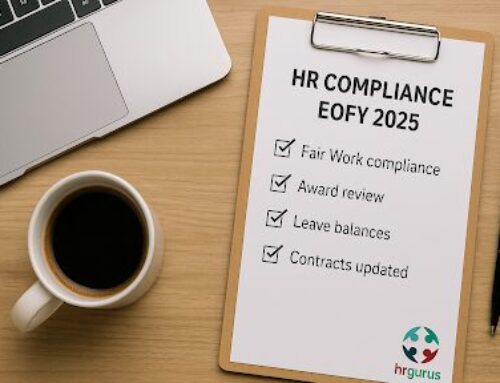Redundancies are tough – for everyone involved. Whether you’re the employer making the call or the employee on the receiving end, it’s never just a business decision. There’s always a human impact. And while the Fair Work Act sets out clear legal obligations for handling redundancies, what has struck me this week is that many organisations follow the required steps but then seem unsure about what to do next. In the process, they forget there’s a real person at the end of this decision.
The Reality of Redundancies in Today’s Economy
In the current economic climate, redundancies are more common than you might think. As businesses face rising costs, technological disruption, and ongoing global uncertainty, many are forced to restructure. According to the Australian Bureau of Statistics, job losses due to redundancy remain a significant contributor to unemployment figures. Recent reports indicate that thousands of Australian workers have faced redundancy across multiple sectors, particularly in retail, tech, and manufacturing.
But the impact of redundancy goes beyond employment statistics. Research consistently shows that losing a job can be one of the most distressing life events. A study by Beyond Blue found that individuals who experience redundancy report increased levels of anxiety, depression, and self-doubt. In fact, 44% of Australians who’ve been made redundant say it significantly impacted their mental health.
Do Most Businesses Get Redundancies Wrong?
Unfortunately, yes. While most businesses follow the legal steps outlined by the Fair Work Act, many fall short when it comes to the human side of the process. Employees often describe their redundancy experience as cold, rushed, or impersonal. Common mistakes include:
- Delivering the news via email or phone call without prior warning.
- Failing to provide clear reasons for the decision.
- Offering no support or guidance for the employee’s next steps.
When businesses get redundancy wrong, the consequences extend beyond the individual being let go. Remaining employees can experience ‘survivor guilt,’ productivity may drop, and the company’s reputation can suffer.
The Legal Steps: What the Fair Work Act Requires
Before making a role redundant, employers must:
- Consult with affected employees – this means genuinely engaging, not just ticking a box.
- Consider feedback – if employees raise concerns or alternative suggestions, these need to be reviewed in good faith.
- Explore redeployment – if there are suitable alternative roles available within the business, they must be offered before finalising the redundancy.
These steps ensure procedural fairness, but compliance alone isn’t enough. What happens after these steps are completed is just as important.
Beyond the Process: The Human Element
Let’s be real, sending an email to inform someone that their role is being made redundant might seem like the easiest option. Maybe you haven’t received any feedback from them during the consultation process, so you assume they have nothing more to say. Maybe you just want to get it over with.
But how would you feel if you were on the receiving end of that email?
Redundancy isn’t just about following a process; it’s about respecting the individual whose job is being impacted. Taking the time to meet with them, whether in person or online, makes all the difference. It gives you the chance to:
- Deliver the news with empathy, not as a faceless message.
- Thank them for their service and contributions, acknowledging the value they’ve brought.
- Reduce the risk of them feeling blindsided, disrespected, or that the decision was personal—which, in turn, makes them less likely to pursue claims for unfair dismissal or adverse action.
Providing Post-Redundancy Support
Redundancy doesn’t end when the employee walks out the door. Offering meaningful support can make a world of difference to the person leaving and to the morale of those who stay. Consider:
- Employee Assistance Programs (EAPs): These programs provide confidential counselling and support services, helping individuals manage the emotional toll of redundancy.
- Outplacement Services: Partnering with a provider to help employees with resume writing, interview preparation, and job search strategies demonstrates genuine care and responsibility.
- Practical Resources: Providing a clear, written summary of available support, including contact details and next steps, ensures employees don’t feel abandoned.
A Better Way to Handle Redundancy Conversations
If you’re an employer facing the difficult task of making roles redundant, here’s a better way to approach it:
- Schedule a meeting – face-to-face is best, but online is fine if needed.
- Be clear, but compassionate – explain the reasoning, acknowledge their efforts, and offer support.
- Give them space to respond – this isn’t just about delivering bad news; it’s about respecting their dignity.
- Follow up in writing – after the meeting, send a formal letter outlining the details.
At the end of the day, redundancy is a business decision, but how you handle it defines your culture, your reputation, and the experience of your employees, past and present. So, let’s not just meet the legal requirements. Let’s put the human back in HR.
We are so passionate about helping business leaders do redundancies right we developed a free guide. You can download it here.
Beyond that if you want more help we have that too! We offer some DYI and DFY options you can check these out here..
Don’t hesitate to reach out if you are nervous and don’t want to go it alone.
Written by Shelley Martin – HR Guru
- About the Author
- Latest Posts
Continue Reading
Get a personal consultation.
Call us today at 1300 959 560.
Here in HR Gurus. We make HR simple because it should be.





